The Ameraucana chicken made its debut in the 1970s and is a relatively new addition to poultry.
Ameraucana origins can be traced back to the Araucana chicken, but they are quite different from the Araucana.
This handsome breed was first developed in the United States and has become increasingly popular across many countries.
Ameraucana chickens are mostly known for their blue egg-laying abilities and have been used to develop other uniquely colored egg-laying breeds like the Olive Eggers. They also have excellent temperaments and are sociable, friendly, quiet, and docile, although cuddling is not their forte.
In this article, we’ll take a closer look at the Ameraucana chicken breed and explore its peculiarities.
From its background to its many attractive attributes, this is one breed you want to read about. Let’s go!
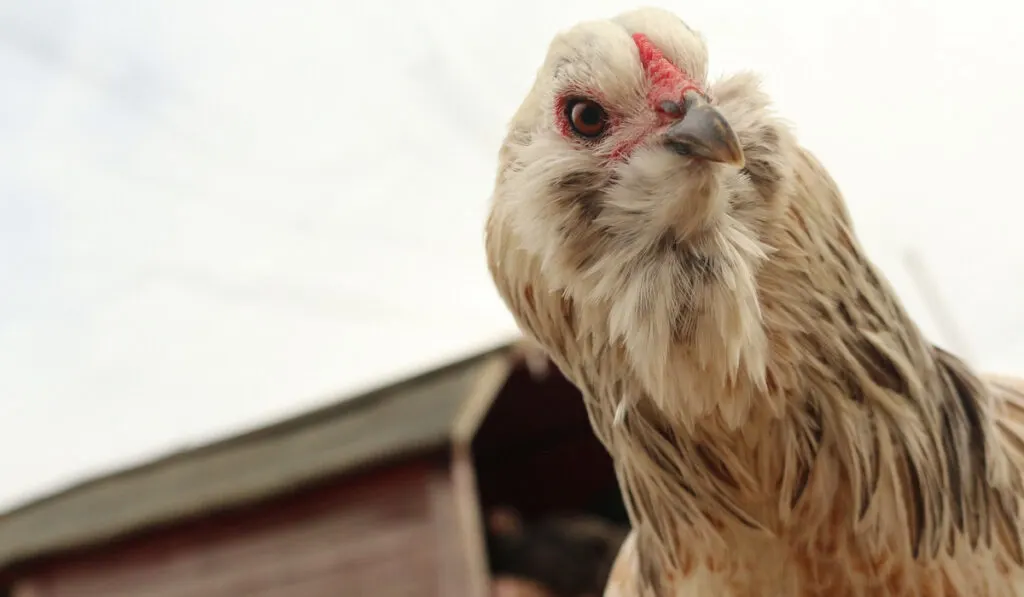
Table of Contents
Quick Facts
| Breed Name | Ameraucana |
| Breed Classification | Both standard and bantam |
| Colors | Black, blue wheaten, brown-red, buff, blue, silver, wheaten, and white. Lavender was recently accepted by the APA in 2020. |
| Weight | Large fowl: 5.5–6.5 lbs. Bantam: 1.6–1.9 lbs. |
| Temperament | Friendly, docile, quiet |
| Purpose | Eggs and meat |
| Productivity | 200 eggs per year |
| Egg size | Medium size |
| Egg color | Blue |
| Tolerance | Cold-tolerant and hardy |
| Broodiness | Broody |
| Feathered legs | No |
| Care requirement | Low |
History/Origin
The Ameraucana chicken breed is a domestic breed of chicken that originated in the United States in the late 1900s.
The breed was developed by breeders who wanted to create a blue egg-laying breed without the lethal alleles of its ancestor, the Araucana, a South American chicken breed well known for its blue eggs.
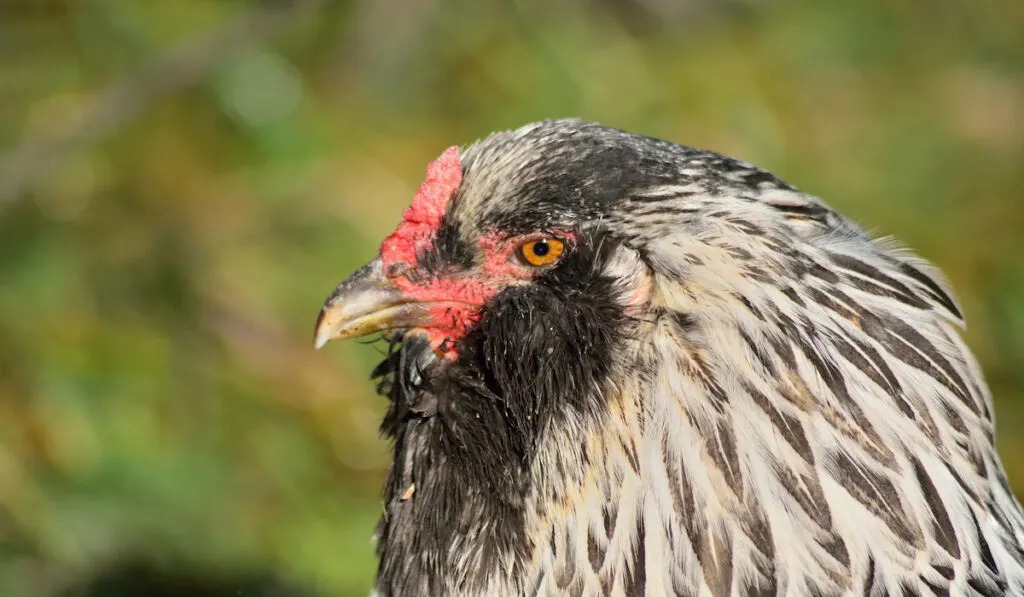
They mixed a number of breeds with the Araucana, including the Rhode Island Red, Barred Plymouth Rock, Brown Leghorn, Brahma, and many more in their bid to create the Ameraucana.
Their first attempt to create the Ameraucana breed in the 1930s was unsuccessful, but they eventually made a breakthrough, and the breed came into existence in the 1970s.
The Ameraucana was first called the American Araucana in 1977 when the first successful breeding occurred.
Its name was later changed to Ameraucana in 1979 when the Ameraucana Bantam Club (ABC) was formed.
The bantam variety was accepted into the American Poultry Association (APA) in 1979, while the standard variety was admitted in 1984.
The Ameraucana is considered a unique breed in the United States as it is distinct from the Araucana and Easter Eggers.
However, it is not considered a separate breed in the UK and Australia.
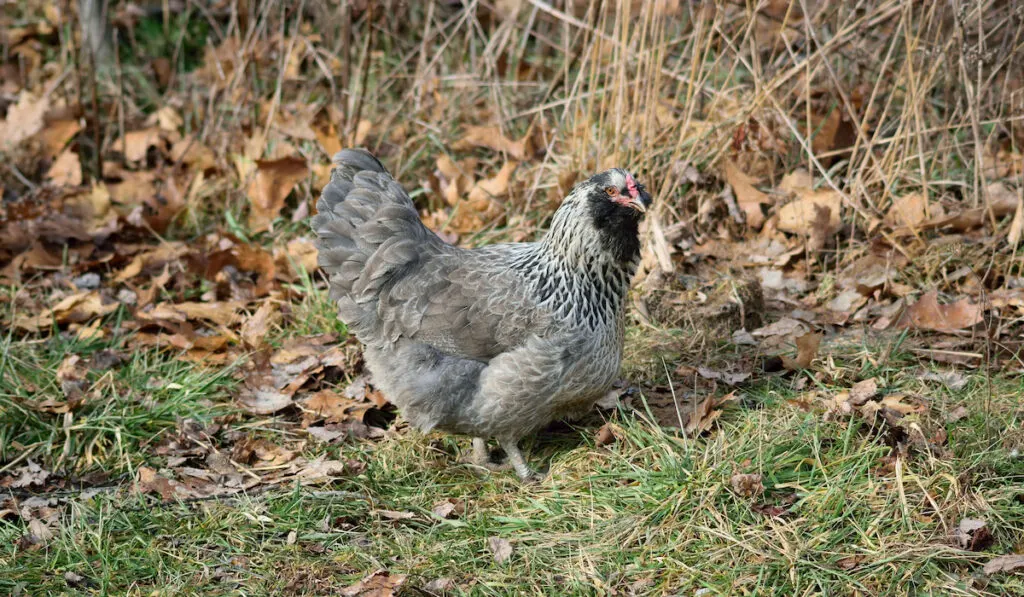
Ameraucana Chicken Varieties
The APA accepts eight color varieties for the bantam and large fowl species. These are:
- Wheaten
- Blue
- Blue-Wheaten
- Black
- White
- Brown-Red
- Buff
- Silver
Another variety, Self-Blue/Lavender, was accepted by the APA in 2020, but only in the standard size.
Characteristics/Features
Ameraucanas are dual-purpose birds, that is, they can be reared for both meat and eggs.
They have a U-shaped body with a full breast, large wings, and an upright tail.
Unlike their ancestors the Araucanas, Ameraucanas do not have ear tufts and do possess tails.
These birds have beards and muffs, which are tufts of feathers that grow around their faces, making them look sweet and cute.
They have a tri-pointed red pea comb and sometimes have non-existent wattles, depending on the variety.
They have reddish-brown eyes, which give them a somewhat intense, hawk-like look.
The breed usually has different colored feet, ranging from slate-blue to black, depending on the color of their feathers.
They have clean, unfeathered legs, and four toes on each foot. The bottom of their feet tend to be as white as the color of their skin.
They are considered a pure breed of chicken unlike Easter Eggers and Olive Eggers, which are hybrids.
They are intelligent, independent, curious, and can adapt to new environments pretty well. They are also cold-tolerant, so they can survive in cold regions.
These chickens love foraging and free-ranging and should be allowed to roam as much as possible. Of course, this also saves money on feeding.
They also like flying, so you can put perches in the coop or pen.
Very importantly, Ameraucanas have some eyesight issues due to their muffs, so you want to keep their surroundings as safe as possible.
They are also somewhat impulsive and can easily get distracted by exciting things, so they are not considered good brooders.
However, once they hatch their chicks, they are some of the most dedicated mothers.
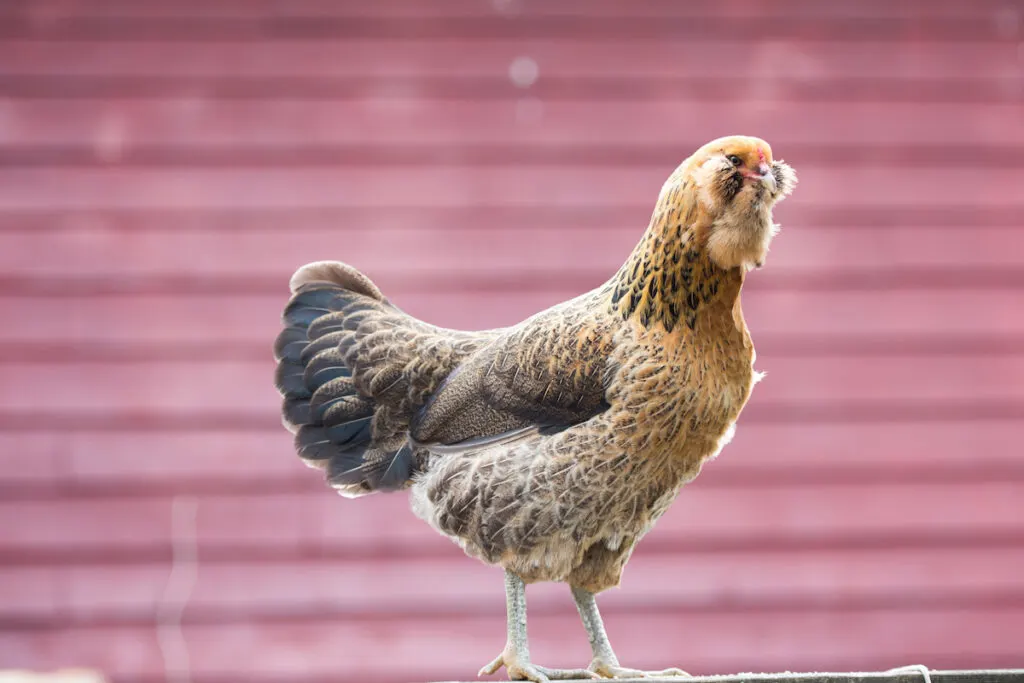
Standard Weight and Height
Ameraucanas are considered medium-sized birds. They vary in size based on age and classification.
The bantams weigh between 1.5–1.8 lbs, and the standards weigh between 4.5–6.5 lbs. They stand at an average height of 15-18 inches.
Bantams
- Roosters: 1.9 lbs
- Hens: 1.6 lbs
- Cockerels: 1.6 lbs
- Pullets: 1.5 lbs
Large Fowls
- Roosters: 6.5 lbs
- Hens: 5.5 lbs
- Cockerels: 5.5 lbs
- Pullet: 4.5 lbs
Temperament
With their reddish-brown eyes and hawk-like looks, one might think them fierce and aggressive, but that look is misleading.
Depending on the variety, their temperaments can vary between shy and skittish to docile and calm. They are generally friendly and like being around humans.
However, they are not especially fond of being carried and cuddled, so you might want to let them be and just let them come to you.
Ameraucanas are considered predator-savvy, so you don’t have to worry too much about their well-being when they roam.
They can hold their own against predators and bullies.
Ameraucanas tolerate being cooped up if their coop has space and entertaining features, but they should still be allowed to roam the yard.
They are considered a middle-dominant species and are only aggressive on rare occasions.
They usually like being among their kind when they are in a flock, but if there are no others of the same breed, put them with birds of similar sizes to prevent dominance fights, especially amongst roosters.
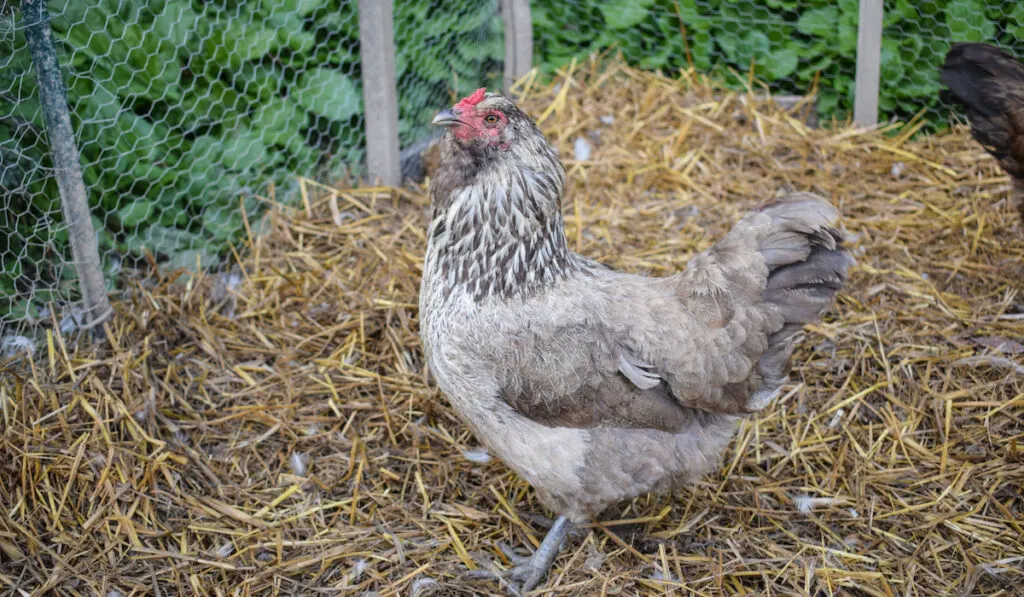
Sexing Ameraucanas
Sexing Ameraucanas isn’t automatic. The absence of combs on some in both sexes makes it very difficult to sex them when they are young.
Sexing only gets easier as they mature, and in some cases, you may not know if you have a rooster or hen until the hens start laying.
Feeding and Nutrition
Ameraucana chickens don’t have specific dietary needs. As such, they can be fed with regular chicken feed.
However, chicks need a 21% starter meal until they are eight weeks old.
These beautiful birds are omnivorous and eat almost anything. Feeding them kitchen scraps, fresh leafy greens, veggies, and fruits will help save money.
They also like fending for themselves most of the time and can be trusted to source their food while roaming.
Nevertheless, they require balanced and standardized feeding plans like other birds.
This is especially important during the cold months to provide the protein, calcium, vitamins, and minerals needed when foraging becomes impossible.
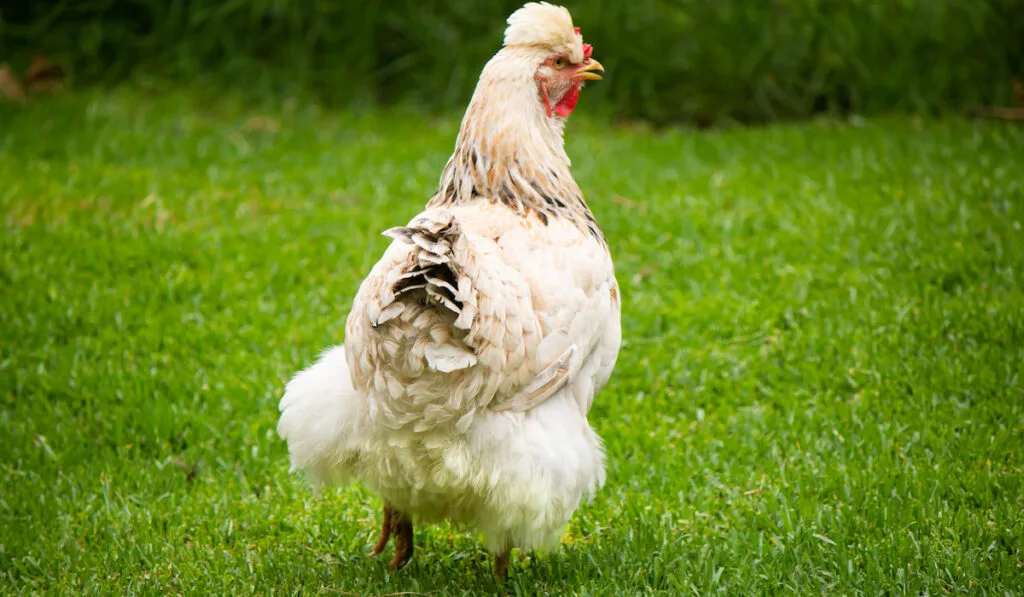
Lifespan
Unlike their ancestors, they have fewer health issues and live longer. They don’t have the lethal tuft gene that kills their young, so there’s a higher success rate with breeding Ameraucanas than Araucanas.
They have an average lifespan of 8 years or longer if they are well cared for.
Breeding and Egg Laying
Ameraucanas are not especially broody, making them hard to breed.
They start producing eggs at about seven months and lay for four years on average.
To successfully breed them, an incubator would be an excellent investment. Their chicks are expensive, so successful breeding would generate income too.
Like most birds, they produce eggs more optimally during the spring.
They produce 3–4 medium-sized eggs weekly and an average of 200 eggs annually. These eggs are usually blue and vary in shades.
Much like their ancestors, they are not prolific layers. However, the color of their eggs makes them desirable despite their lack of prolificacy.
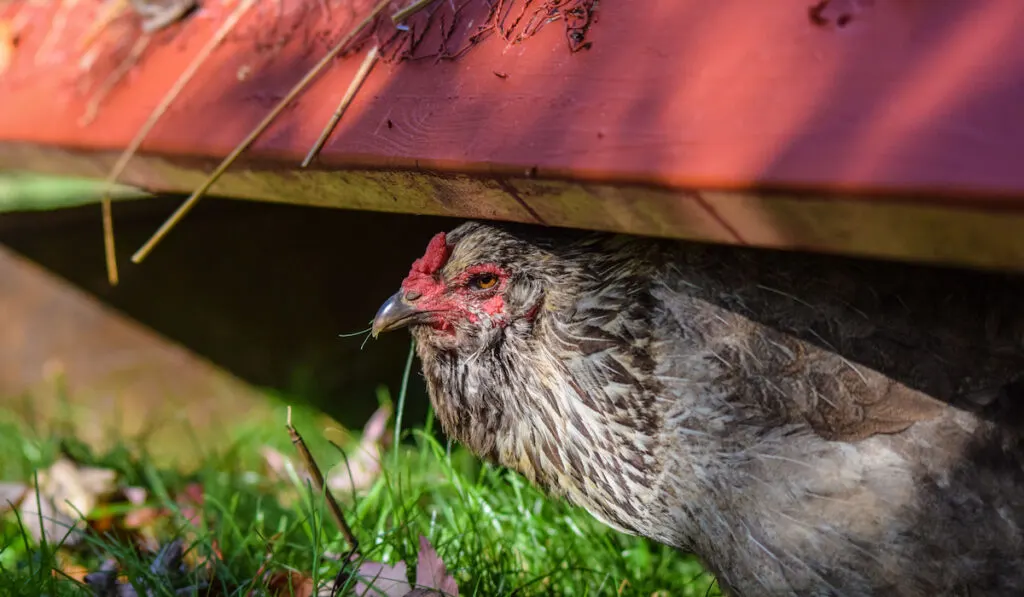
Health Issues
Ameraucana chickens are generally healthy and hardy chickens.
They do not have any particular diseases associated with their breed, but like other birds, they are susceptible to external and internal parasites.
Ameraucanas might suffer from mites and lice infestations due to the extra feathers on their face.
They can also have intestinal worms, so regular deworming is vital to their well-being. Consult your veterinarian about developing a regular deworming schedule.
They are cold-tolerant and don’t suffer from frostbite because of their pea combs.
These birds are not as resistant to heat as they are to cold; as such, they should be provided with cool places during the hot months.
You can add blocks of ice to their water to keep it cool on hot days or serve them frozen treats. It helps to keep their temperature down.
If you feed them well and provide proper care, they will live long and happily.
Conclusion
Ameraucanas are a rare beauty that is becoming very popular these days.
This fascinating breed has many admirable and attractive attributes, from their uniquely colored eggs to their profound sense of independence.
Their foraging habits also make them relatively inexpensive to raise, and they are friendly and social, even though they are not cuddlers.
If you want to add them to your backyard poultry flock, consult a trusted breeder so you don’t get scammed into buying an Araucana or Easter Egger.
They usually sell for around $18, so if you see one for $8-$10, beware!
Resources
- https://www.chickensandyou.com/ameraucana/#Ameraucana-eggs
- https://petkeen.com/ameraucana-chicken
- https://en.m.wikipedia.org/wiki/Ameraucana
- https://learnpoultry.com/ameraucana-chickens
- https://backyardchickenproject.com/breed-spotlight-ameraucana
- https://www.somerzby.com.au/blog/ameraucana-chickens
- https://www.chickensandmore.com/ameraucana
- https://backyardpoultry.iamcountryside.com/chickens-101/ameraucana-chicken-august-breed-of-themonth/
- https://milefour.com/blogs/learn/ameraucana-chicken
- https://practicalselfreliance.com/ameraucana-chicken-breed-guide
- https://www.thehappychickencoop.com/ameraucana
